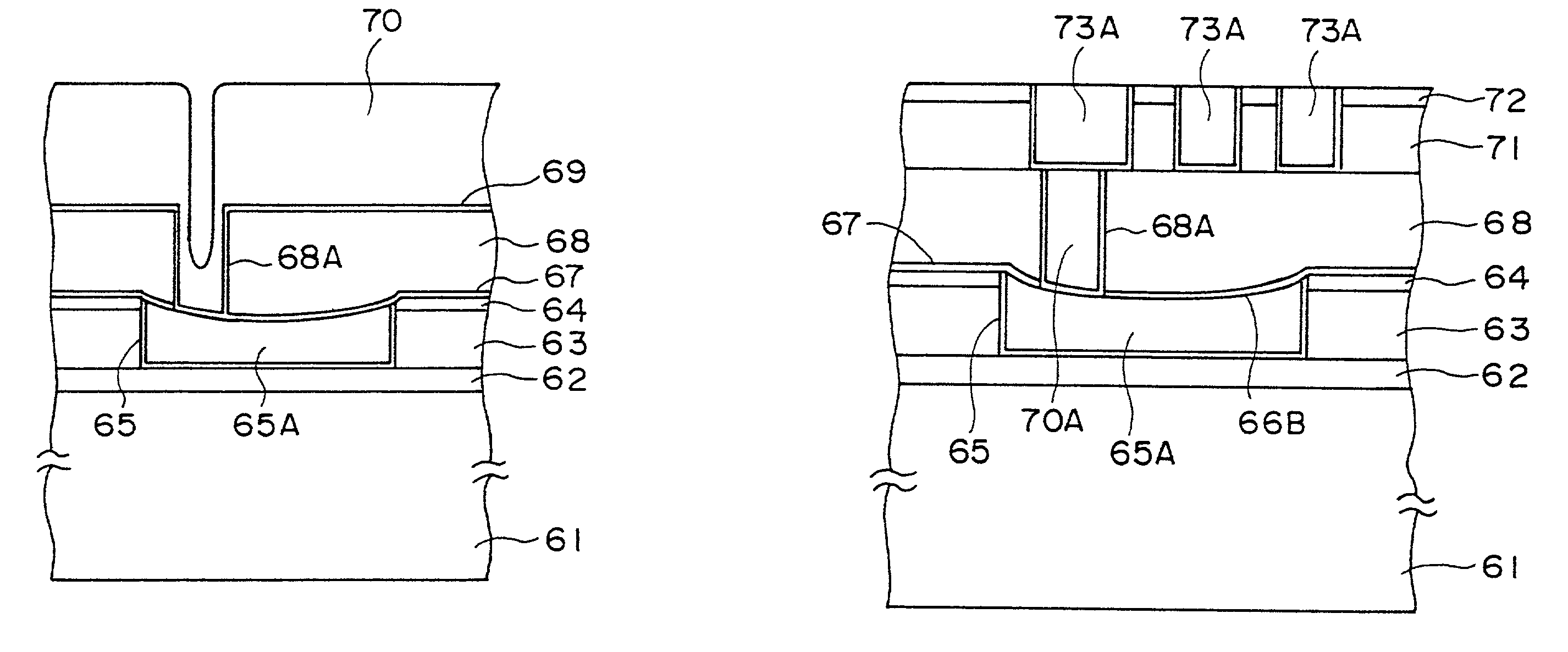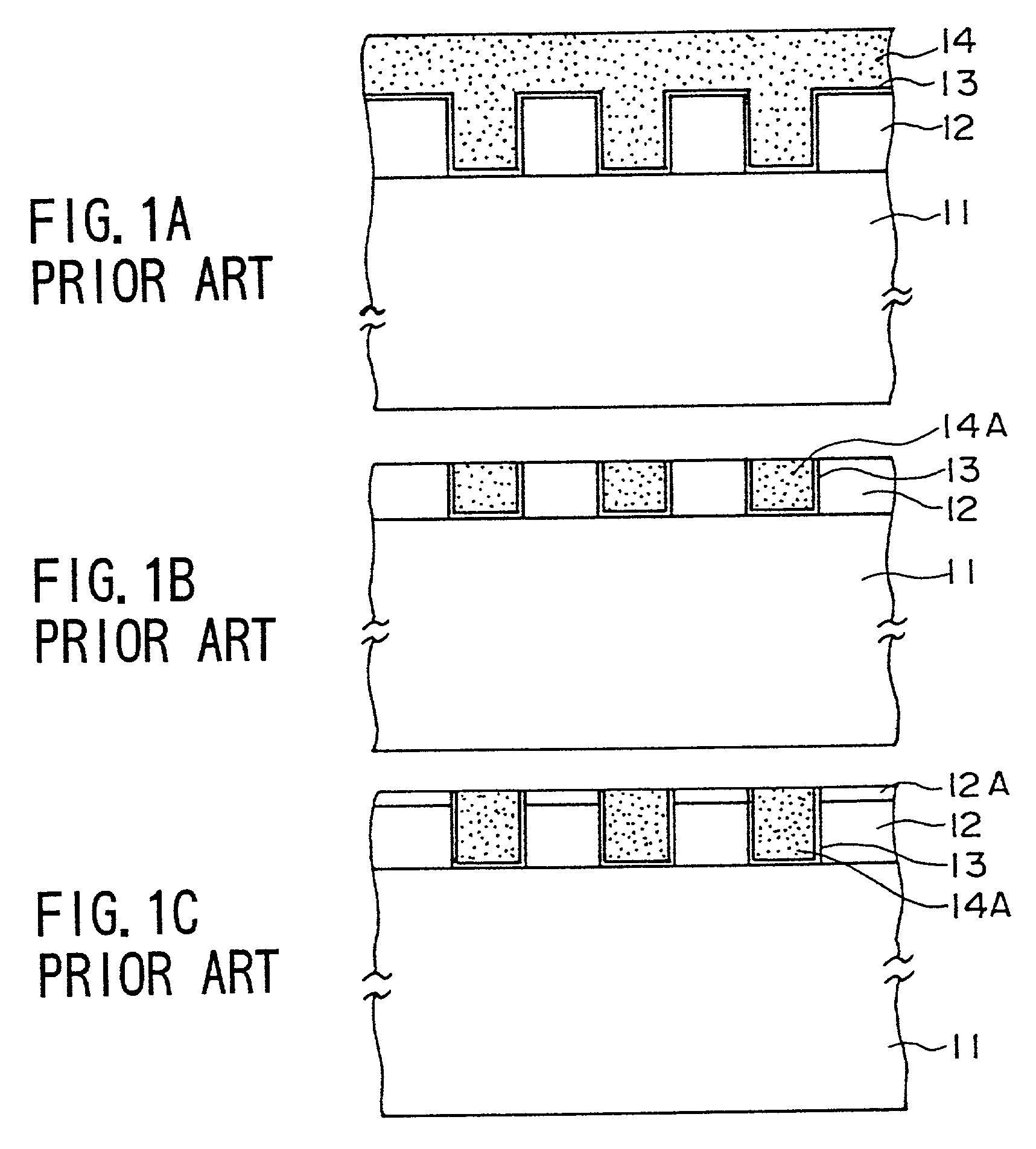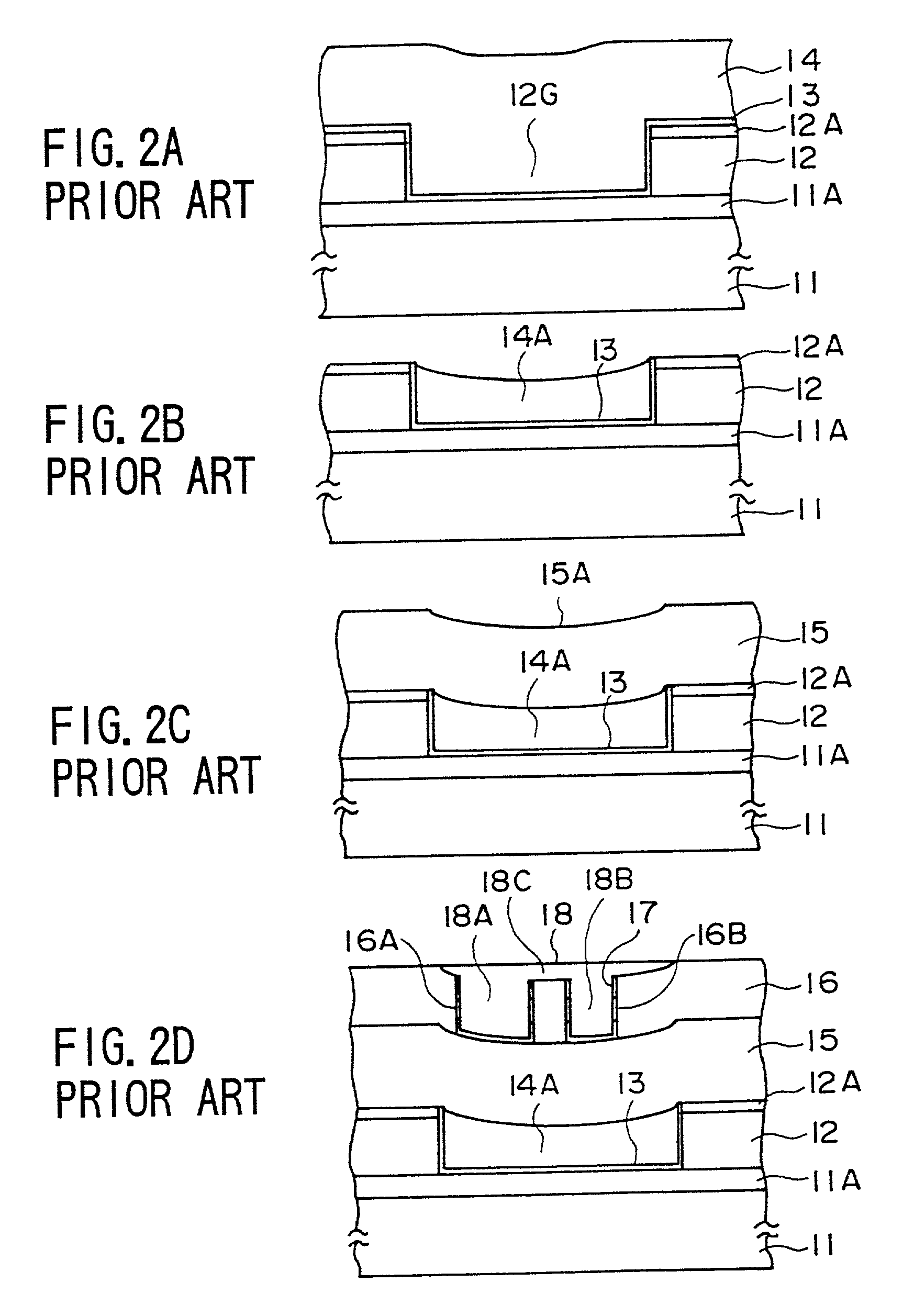Semiconductor device having a multilayer interconnection structure
a multi-layer, interconnection technology, applied in the direction of semiconductor devices, semiconductor/solid-state device details, electrical apparatus, etc., can solve the problems of large dielectric constant of about 4.0, delay in signals that are transmitted through the interconnection pattern,
- Summary
- Abstract
- Description
- Claims
- Application Information
AI Technical Summary
Benefits of technology
Problems solved by technology
Method used
Image
Examples
first embodiment
[0070]FIGS. 3A–3N are diagrams showing the fabrication process of a semiconductor device according to a first embodiment of the present invention.
[0071]Referring to FIG. 3A, an SiO2 film 22 is deposited on a Si substrate 21, on which an active device such as a MOSFET may be formed, by a plasma CVD process with a thickness of about 300 nm, followed by a deposition of an SiN film 23 on the SiO2 film 22 with a thickness of about 50 nm.
[0072]Next, in the step of FIG. 3B, an organic interlayer insulation film 24 of an aromatic compound polymer such as the FLARE 2.0 (trade name) of Allied Signal Corp. or a hydrocarbon polymer such as the SiLK of Dow Chemical, Inc., is deposited on the SiN film 23 by a spin-coating process, typically with a thickness of about 400 nm. Further, an organic SOG film 25 is formed on the organic interlayer insulation film 24 by a spin-coating process typically with a thickness of about 50 nm.
[0073]In the step of FIG. 3B, the interlayer insulation film 24 and the...
second embodiment
[0086]As explained with reference to FIGS. 2A–2D, there is a tendency, in a multilayer interconnection structure formed by a damascene process, that a wide conductor pattern undergoes a dishing. When such a dishing is caused, there may be a short circuit in the upper conductor patterns formed above the wide conductor pattern as explained before. Thereby, the yield of semiconductor fabrication is inevitably decreased.
[0087]Hereinafter, a fabrication process of a semiconductor device according to a second embodiment of the present invention for eliminating the foregoing problem will be described with reference to FIGS. 5A–5M.
[0088]Referring to FIG. 5A, an SiO2 film 42 is deposited on a Si substrate 41, on which an active device such as a MOSFET may be formed, by a plasma CVD process with a thickness of about 200 nm, and an organic interlayer insulation film 43 is deposited on the SiO2 film 42 by a spin-coating process typically with a thickness of about 400 nm. The organic interlayer ...
third embodiment
[0101]FIGS. 6A–6H show a fabrication process of a semiconductor device according to a third embodiment of the present invention.
[0102]Referring to FIG. 6A, the step of FIG. 6A corresponds to the step of FIG. 5G and an organic interlayer insulation film 63 is formed on a Si substrate 61, on which an active device such as a MOSFET is formed, via an intervening SiO2 film 62.
[0103]On the organic interlayer insulation film 63, a polishing stopper film 64 of an organic SOG film or a plasma-CVD SiO2 film is provided, and a refractory conductor film 65 of a refractory metal compound such as TiN is provided so as to cover a side wall and a bottom surface of a groove formed in the polishing stopper film 64 and the organic interlayer insulation film 63. Thereby, the groove is filled by a Cu pattern 66A formed in contact with the refractory conductor film 65 by a damascene process including a deposition of a Cu layer and a CMP process thereof, similarly as before. As a result of the chemical me...
PUM
 Login to View More
Login to View More Abstract
Description
Claims
Application Information
 Login to View More
Login to View More - R&D
- Intellectual Property
- Life Sciences
- Materials
- Tech Scout
- Unparalleled Data Quality
- Higher Quality Content
- 60% Fewer Hallucinations
Browse by: Latest US Patents, China's latest patents, Technical Efficacy Thesaurus, Application Domain, Technology Topic, Popular Technical Reports.
© 2025 PatSnap. All rights reserved.Legal|Privacy policy|Modern Slavery Act Transparency Statement|Sitemap|About US| Contact US: help@patsnap.com



